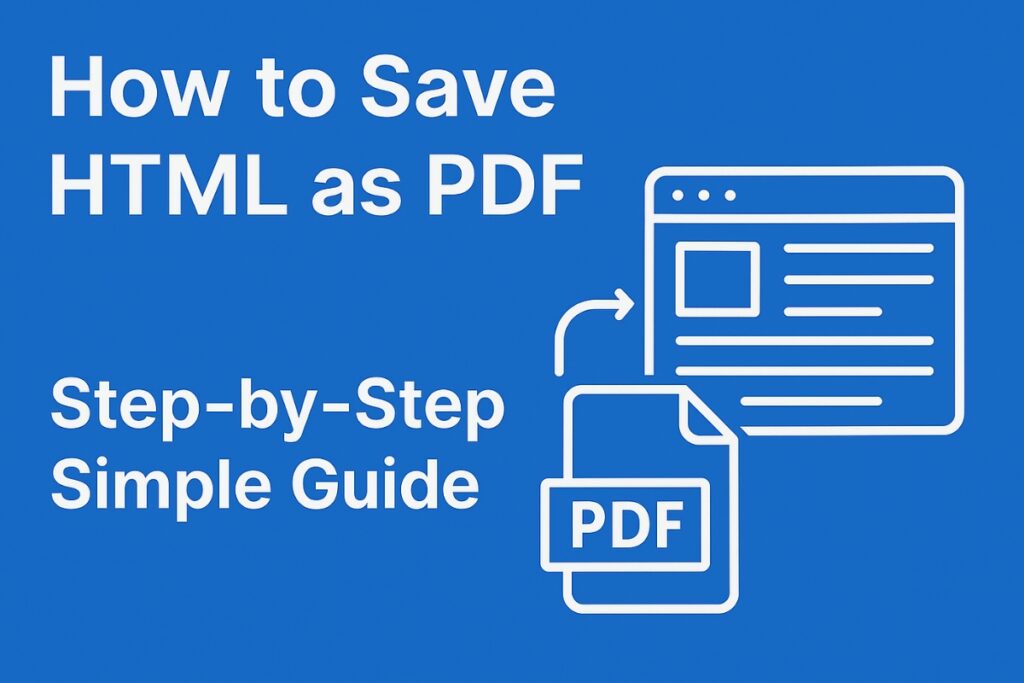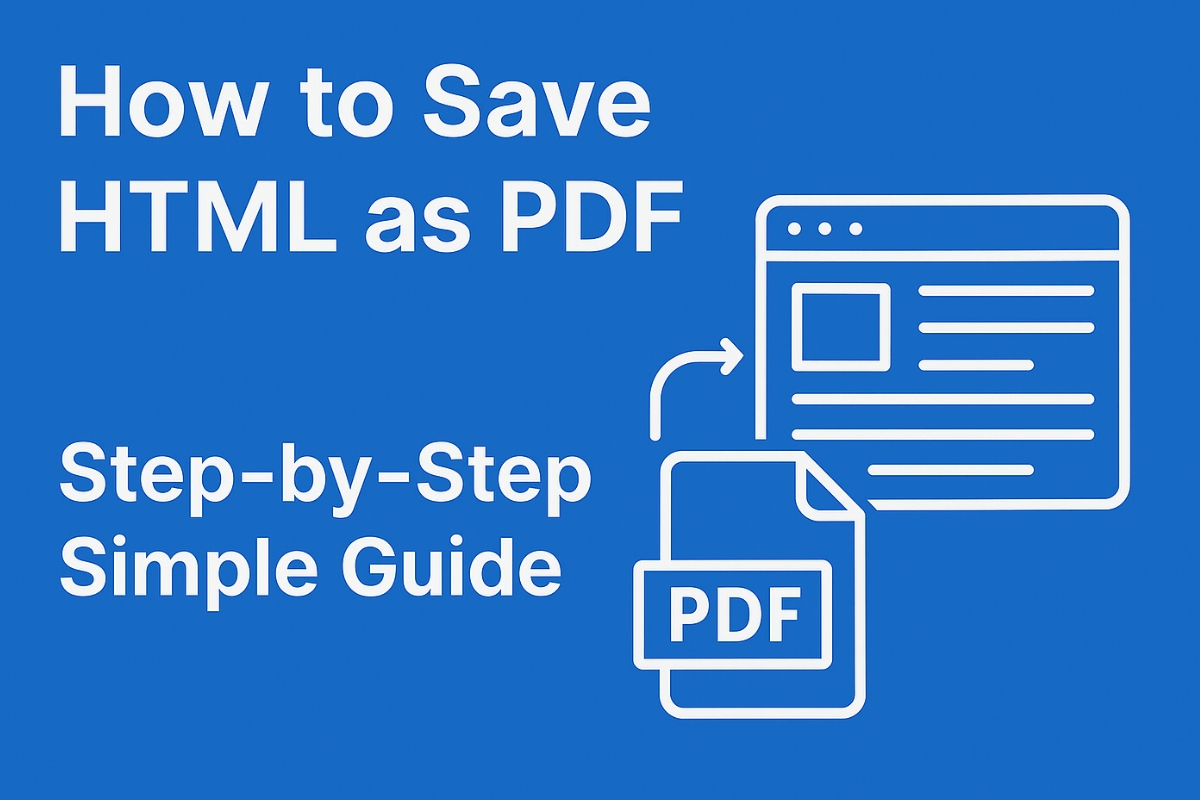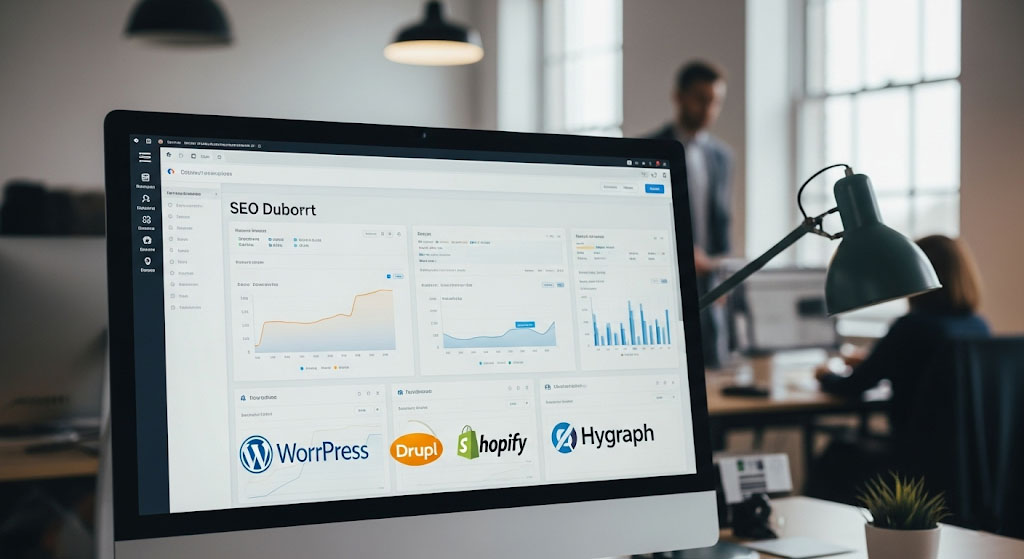Saving an HTML file as a PDF is an essential skill for anyone who wants to preserve a webpage for offline use, documentation, or sharing. Whether you are a developer, student, blogger, or researcher, learning how to save HTML as PDF helps you create a permanent, printable, and professional copy of your content.
Unlike screenshots, PDFs keep links, layout, and text quality intact. That is why understanding how to save HTML as PDF is valuable for creating portfolios, reports, website demos, and offline archives. For more insights on startup tech and digital growth, explore the Rteetech homepage.
What Is an HTML File?
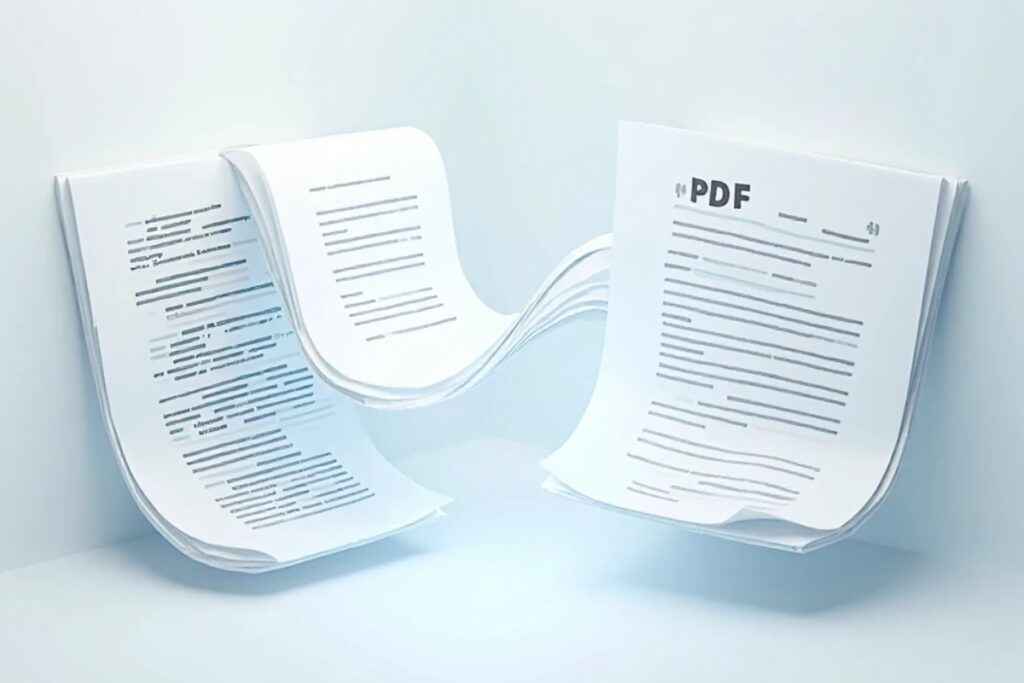
HTML stands for HyperText Markup Language, and it is the standard format used to build web pages. Every webpage you visit uses HTML to structure text, images, links, headings, and other elements. Saving an HTML page as a PDF means capturing the same page layout in a printable format that cannot be edited easily, which is perfect for final documentation.
Why Convert HTML to PDF?
Converting HTML to PDF offers many benefits:
- Easy to print and share
- Preserves layout and formatting
- Works offline
- Protects content from editing
- Ideal for reports and portfolios
When you know how to save HTML as PDF, you can turn web pages into professional files ready for clients, teachers, or team members.
Method 1: Save HTML as PDF Using a Web Browser
The quickest method to save a webpage or local HTML file is through your browser. Chrome, Firefox, and Edge support this feature.
Steps in Google Chrome
- Open the HTML file in Chrome
- Press Ctrl + P (Windows) or Cmd + P (Mac)
- Under Destination, choose Save as PDF
- Adjust layout or margins if needed
- Click Save
This method keeps the page layout close to the original HTML.
Steps in Microsoft Edge
- Open the HTML page
- Press Ctrl + P
- Select Microsoft Print to PDF
- Save the file to your device
Method 2: Using Online HTML to PDF Converters
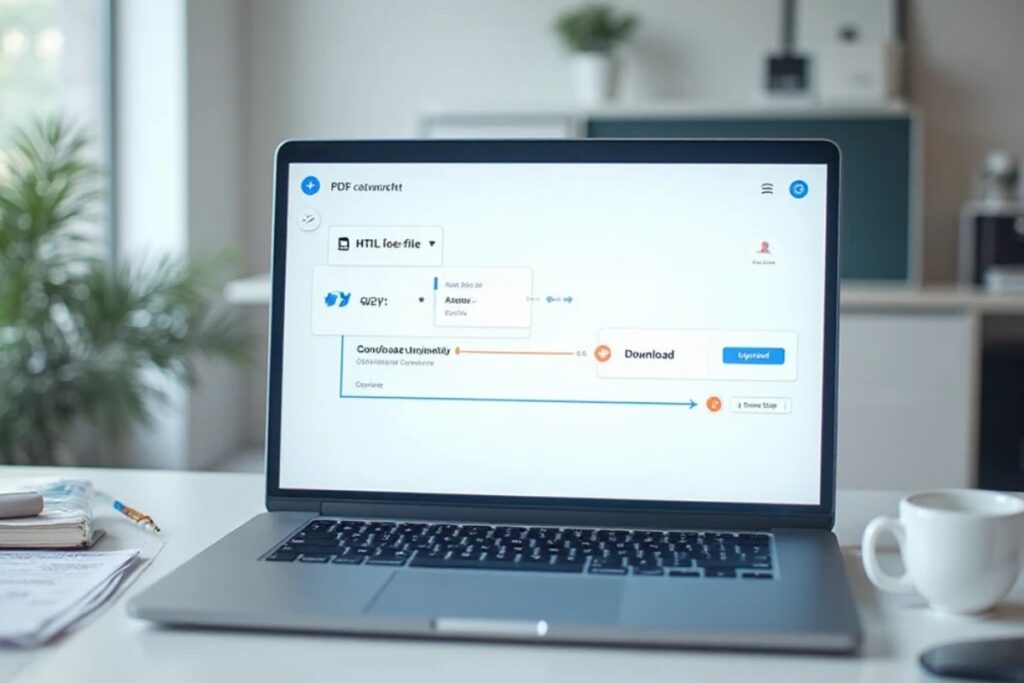
If you do not want to use a browser, online tools offer a simple alternative. Just upload your HTML file or paste a website link and download the PDF.
Popular Tools:
- Web2PDF
- PDFcrowd
- HTMLtoPDF
Steps
- Upload HTML or enter URL
- Choose settings like page size
- Click Convert
- Download the PDF
Online tools are useful when you need batch conversion or customization like adding headers or footers.
Method 3: Convert HTML to PDF Using Word
Microsoft Word can also convert HTML to PDF.
Steps
- Open HTML in Word
- Click File → Save As
- Select PDF
- Save the file
This method is good for documents like articles, resumes, or letters where formatting is simple.
Method 4: Using Developer Tools or Code (Advanced)
Developers often convert HTML to PDF using code libraries.
Popular Libraries:
- wkhtmltopdf
- Puppeteer
- jsPDF
These tools help automate PDF creation from websites, ideal for dashboards, invoices, and apps.
Tips to Preserve Formatting in PDF
To get the perfect output while learning how to save HTML as PDF, keep these tips in mind:
- Use print-friendly CSS
- Avoid animations or dynamic elements
- Check page breaks manually
- Preview before saving
Common Issues and Solutions
| Issue | Solution |
| Missing images | Use absolute URLs |
| Broken layout | Try desktop browser |
| Large file size | Compress PDF |
Is It Safe to Use Online Converters?
Most online tools are safe, but avoid uploading private or confidential information. For sensitive pages, it is better to use a browser or offline tool.
Who Needs HTML to PDF Conversion?

- Students: Save tutorials and research
- Developers: Export project demos
- Bloggers: Create downloadable guides
- Businesses: Generate reports and receipts
Anyone creating or consuming web content benefits from knowing how to save HTML as PDF.
Conclusion
Learning how to save HTML as PDF is a practical skill that helps you preserve web content in a reliable, shareable format. Whether you use a browser, online tool, or software, each method makes it easy to create a perfect digital copy.
From portfolios to professional documents, PDF ensures your content remains consistent everywhere. learn more about our SEO for business growth strategies instead of just “Rteetech LCC”.
FAQs
How to save HTML as PDF without losing formatting?
To avoid formatting issues, use a modern browser like Chrome and check the print preview window to adjust layout, margins, and background graphics before saving the page as a PDF.
Can I convert multiple HTML files into PDF at the same time?
Yes, bulk conversion is possible using tools like wkhtmltopdf or specialized software that supports batch processing, especially helpful for developers and documentation teams.
Does the PDF format keep clickable links from the HTML file?
Most browsers preserve hyperlinks during conversion, so users can still click and navigate to linked pages within the final PDF document.
Can I save a live website as a PDF file directly?
Yes, simply open the webpage in your browser, use the print option, and select “Save as PDF” to capture the current web content exactly as it appears.
Can I save HTML as PDF using a mobile phone?
Both Android and iOS browsers support PDF saving through the share or print option, making it easy to convert web pages to PDF on mobile devices.
Are online HTML to PDF converters safe to use?
Online tools are safe for general content, but avoid uploading confidential or personal information, as file security depends on the platform you choose.
Can I edit a PDF after converting HTML?
Once converted, the PDF cannot be edited like HTML, but you can use a PDF editor or dedicated software to make changes or add annotations.
Why are some images missing in the final PDF?
Images may be missing if the webpage was not fully loaded or if the image paths are restricted, so ensure all assets are visible before converting.
